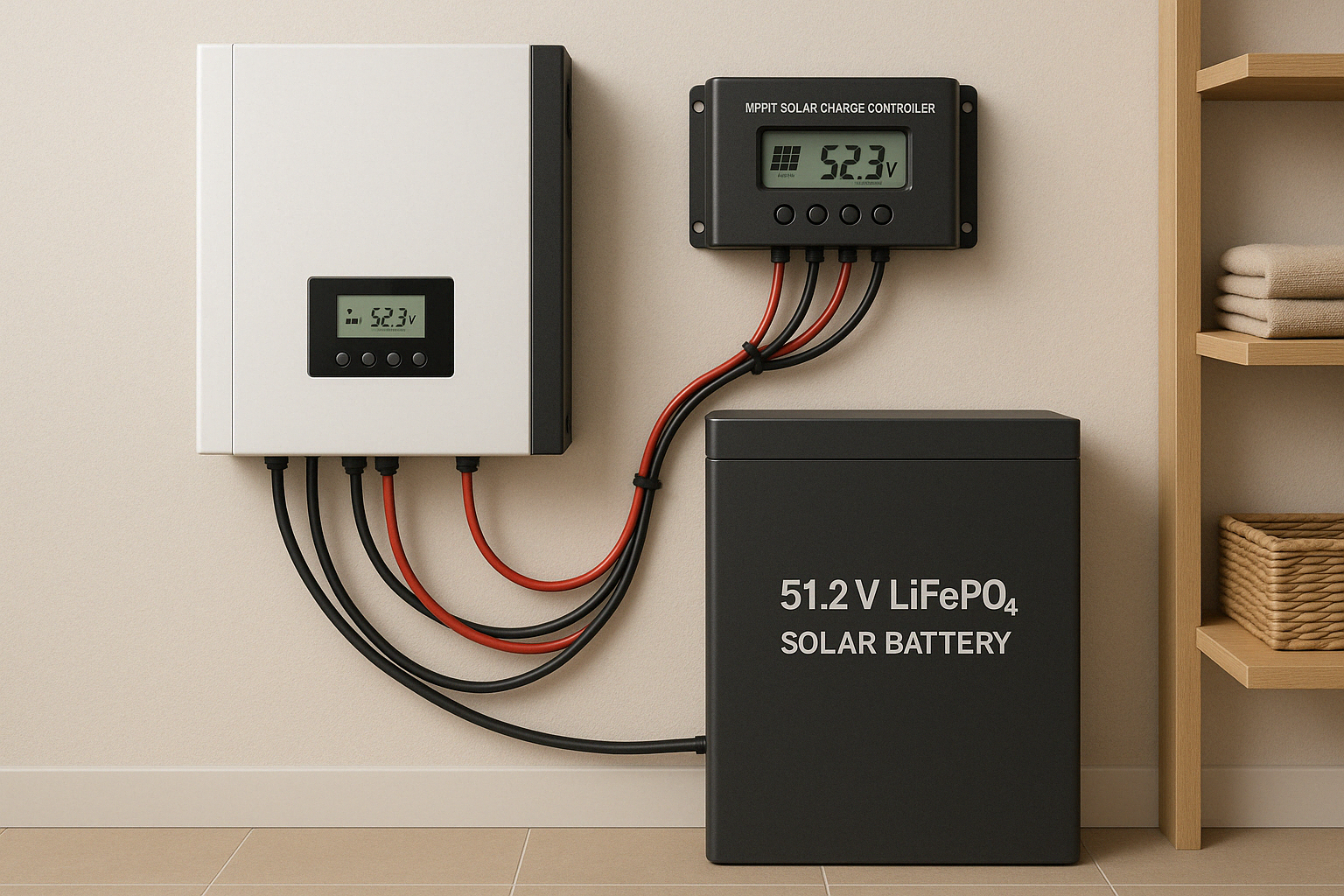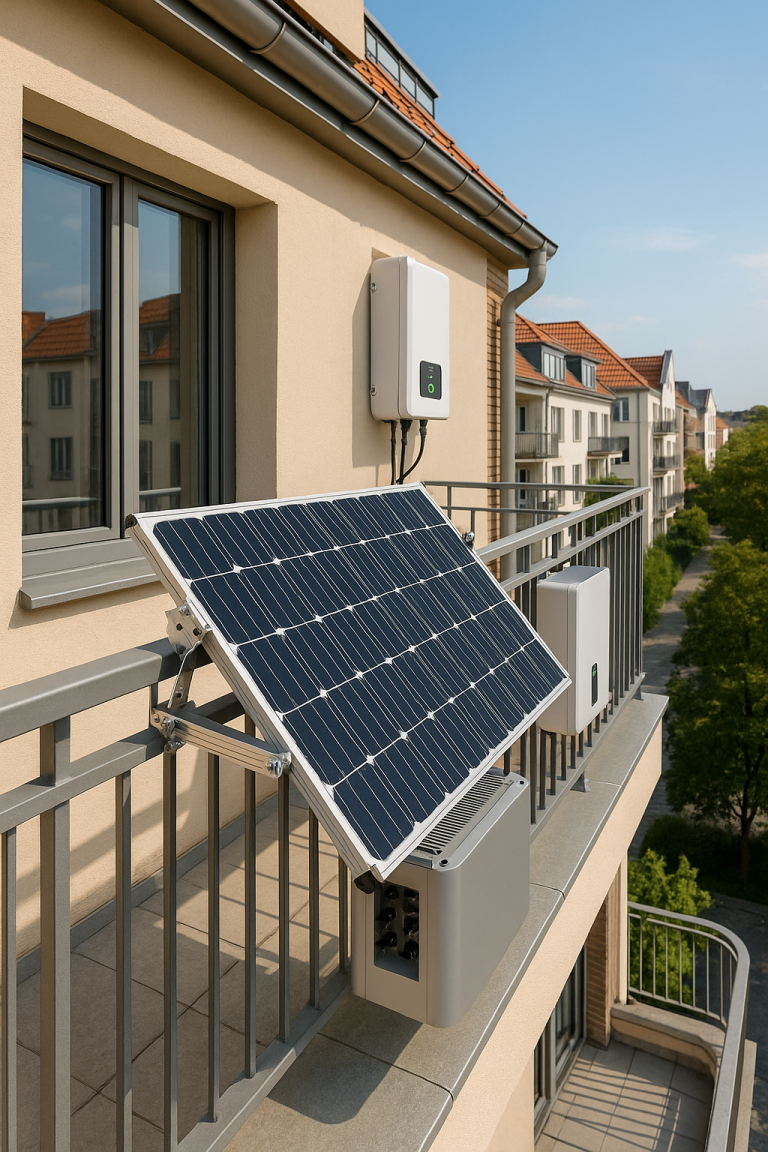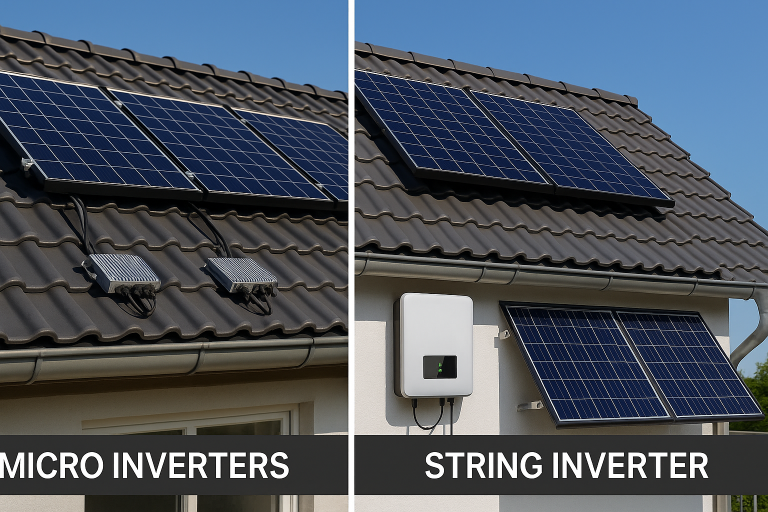1. Introduction: The Rise of 51.2V Batteries in Solar Systems
As solar energy adoption accelerates across Europe, homeowners and installers are seeking battery storage solutions that offer higher efficiency, better safety, and long-term value. In 2025, 51.2V LiFePO₄ batteries are quickly becoming the preferred voltage standard for modern solar energy systems.
Whether you’re building a balcony solar kit, an off-grid cabin, or a hybrid backup system, 51.2V batteries offer compelling benefits that make them a smart investment for sustainable energy use.
This guide will help you understand what 51.2V LiFePO₄ batteries are, how they differ from traditional 48V systems, and why they’re ideal for solar homes in the EU.
2. What Is a 51.2V LiFePO₄ Battery?
A 51.2V LiFePO₄ battery is a high-efficiency, deep-cycle lithium iron phosphate battery made up of 16 individual 3.2V cells in series (3.2V × 16 = 51.2V). This specific voltage is becoming a new standard in solar storage systems.
It’s part of the LiFePO₄ (Lithium Iron Phosphate) family — known for:
- Long cycle life (≥6,000 cycles)
- Thermal and chemical stability
- Deep discharge capability
- Low internal resistance
Unlike 12V or 24V systems that require multiple battery packs in parallel, a single 51.2V battery can directly match 48V solar inverters, reducing wiring complexity and boosting overall efficiency.
3. Voltage Explained: Why 51.2V Instead of 48V?
Many users ask: “Why use 51.2V when my system is 48V?”
Here’s the key:
51.2V is the nominal voltage of a fully charged 48V LiFePO₄ battery system. In reality:
| Battery Type | Nominal Voltage | Fully Charged Voltage |
|---|---|---|
| Lead Acid (4×12V) | 48V | 54.4V |
| LiFePO₄ (16×3.2V) | 51.2V | ~57.6V |
This makes 51.2V batteries:
- A perfect voltage match for modern inverters
- Able to deliver higher discharge rates
- More efficient during charging, with less power loss
4. Core Advantages for Solar Applications
Here’s why 51.2V LiFePO₄ batteries outperform traditional batteries in solar use:
✅ Higher Efficiency
Delivers more usable energy per charge with over 95% round-trip efficiency.
✅ Deeper Depth of Discharge (DoD)
80–90% DoD without damaging battery lifespan — more energy per cycle.
✅ Compact and Stackable
Modular design allows multiple batteries to be connected in parallel for larger storage.
✅ Faster Charging Time
Accepts higher charge currents without overheating.
✅ Longer Lifespan
≥6,000 cycles @ 80% DoD means 10–15 years of reliable performance.
✅ Low Maintenance
No need for water top-up, balancing, or temperature equalization like lead-acid.
5. Safety Benefits of LiFePO₄ Chemistry
Compared to traditional lithium-ion or lead-acid batteries, LiFePO₄ is the safest chemistry available for residential storage:
- ✅ Non-combustible in case of overcharging or puncture
- ✅ Stable at high temperatures
- ✅ Minimal risk of thermal runaway
- ✅ Integrated Battery Management System (BMS) handles:
- Overcharge/over-discharge protection
- Temperature and voltage regulation
- Cell balancing
This makes 51.2V LiFePO₄ batteries ideal for indoor or wall-mounted installation in apartments, utility rooms, and commercial spaces.
6. Compatibility with Inverters, MPPT Controllers & Smart Systems
Modern hybrid and off-grid inverters — from brands like Growatt, Victron, Deye, and GoodWe — are optimized for 48V/51.2V input.
Most 51.2V batteries support:
- CAN/RS485 communication
- Real-time SOC (state of charge) reporting
- Direct compatibility with MPPT charge controllers
- Modular expansion and automatic battery detection
That means faster system setup, plug-and-play scalability, and minimal configuration errors.
7. Ideal Use Cases in EU Homes & Small Businesses
51.2V batteries are increasingly used in:
- Balcony solar systems with plug & play setups
- Off-grid cabins and tiny houses in remote EU regions
- Hybrid solar systems that combine solar + grid + battery
- EV charging stations powered by solar + storage
- Retail stores and offices with daily peak-hour usage
They’re especially popular in Germany, Austria, Spain, and Italy, where rising grid costs and solar incentives make energy independence more attractive.
8. Cost vs. Value: Is It Worth the Upgrade?
Yes — even though 51.2V LiFePO₄ batteries cost 10–20% more upfront, they offer significantly better long-term return on investment (ROI).
| Feature | Lead Acid | 48V Li-Ion | 51.2V LiFePO₄ |
|---|---|---|---|
| Cost per kWh | Low | Medium | Medium–High |
| Cycle Life | 500–800 | 1,000–3,000 | 6,000+ |
| DoD | 50–60% | 70–80% | 80–90% |
| Maintenance | Monthly | Low | None |
| Safety | Moderate | Medium | High |
? Bottom line: Over 10 years, 51.2V systems offer lower cost per cycle, higher reliability, and fewer replacements.
9. 51.2V in Off-Grid and Hybrid Solar Systems
If you’re building a:
- ? 100% Off-grid home
- ? Hybrid setup with both solar and grid
- ?️ Commercial backup system for outages
Then a 51.2V battery setup is the most reliable and scalable option.
Most inverter-charger units (e.g. 5kW–10kW hybrid inverters) are designed to work natively with 48V–51.2V battery banks, offering:
- Time-of-use programming
- PV priority switching
- Load shedding
- Peak shaving
51.2V makes it all work smoother, safer, and smarter.
10. Conclusion – Should You Choose 51.2V for Your Solar Project?
The short answer: Yes — if you’re building a serious solar setup in 2025.
51.2V LiFePO₄ batteries bring:
- Superior safety and lifespan
- Better inverter compatibility
- High DoD and energy efficiency
- Low maintenance and long-term value
Whether you’re planning a small home install or expanding into multi-battery systems, 51.2V is the voltage of the future — and the smartest investment for your solar energy independence.





Very good https://is.gd/tpjNyL